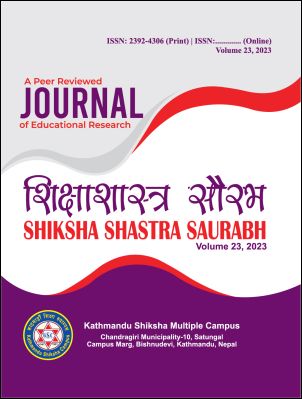Effect of Yoga and Meditation on Different Health Parameters of the Yoga Practitioners
DOI:
https://doi.org/10.3126/sss.v23i1.51932Keywords:
Yoga, meditation, health parameters, practitionersAbstract
Yoga practitioners always look energetic, ever young and healthy compared to others because yoga postures (Asana) make the body flexible. Meditation (Dhyan) and breathing exercise (Pranayama) keep the physical, mental and spiritual wellbeing. The objective of this study is to identify the effect of Yoga and Meditation on different health parameters of the Yoga Practitioners. The method applied in this study was quantitative, descriptive based on the five points Likert Scales Ranking. The Wilcoxon Signed Rank test (2-tailed) revealed that a statistically positive significantly effect on health parameters after attended in yoga class, Z = -10.990, p<0.01 (r=0.59)
and meditation, Z= 10.544, p<0.01 with large effect size (r=0.57). The Pearson correlation analysis result showed significant correlation between the impact of yoga and meditation on regular practitioners. The relative importance index (RII) analysis of respondent’s perceptions on each category, happiness had scored highest ranking. This study concluded that, yoga and meditation had prompt effect on the entire health of regular yoga and meditation practitioners to enhance complete wellbeing who practiced three to six months. Similarly, yoga and meditation indicated higher effect on the other domains of physical, mental and spiritual health parameters. While analysis the data, the female participants were found more benefited than that of male participants.
Downloads
Downloads
Published
How to Cite
Issue
Section
License
© Research Management Cell (RMC), Kathmandu Shiksha Campus

